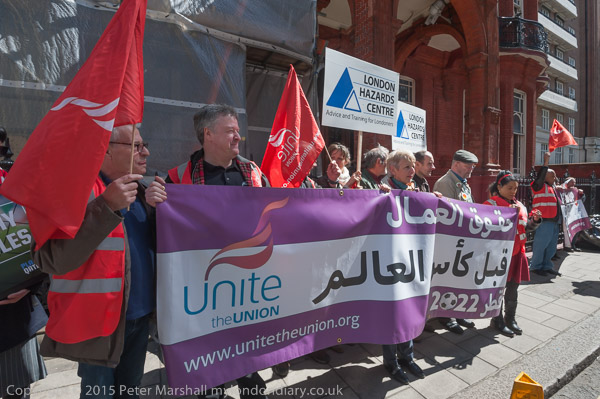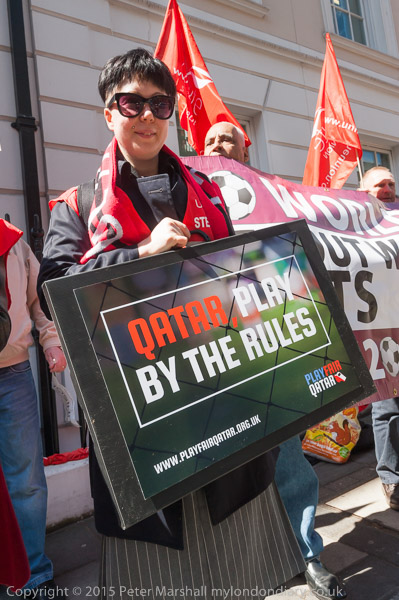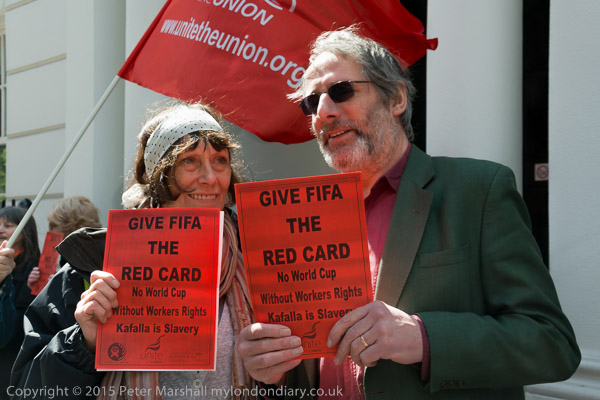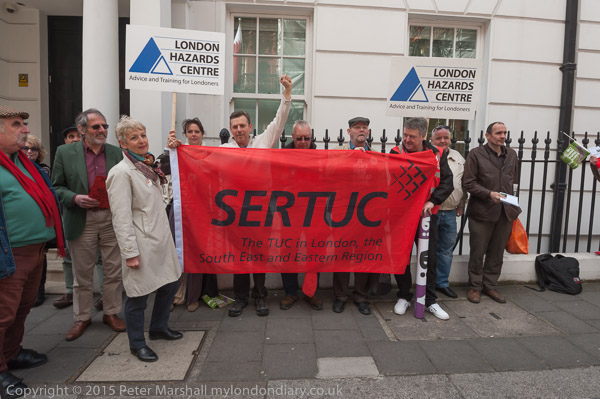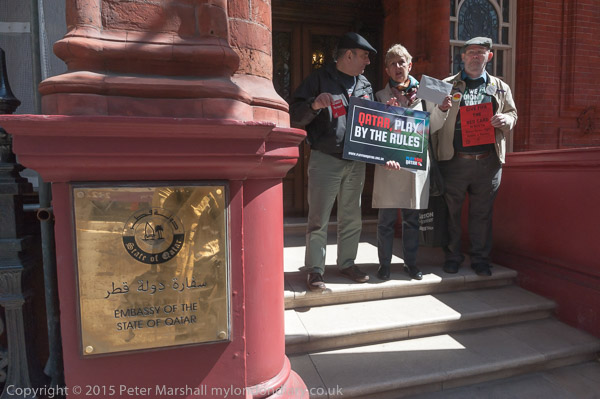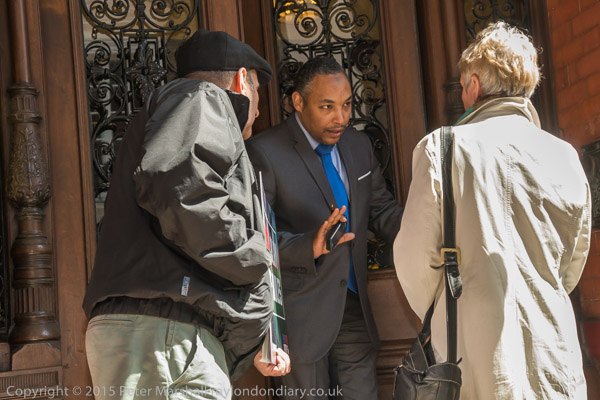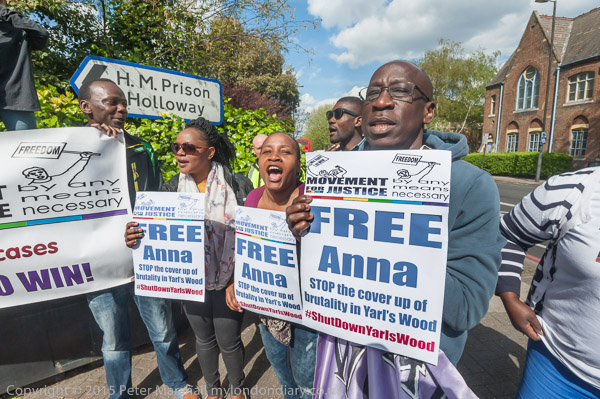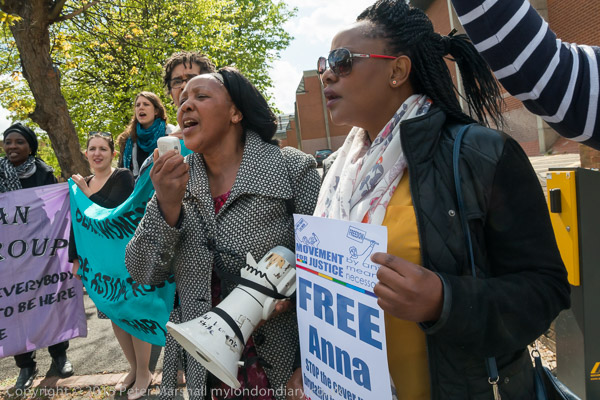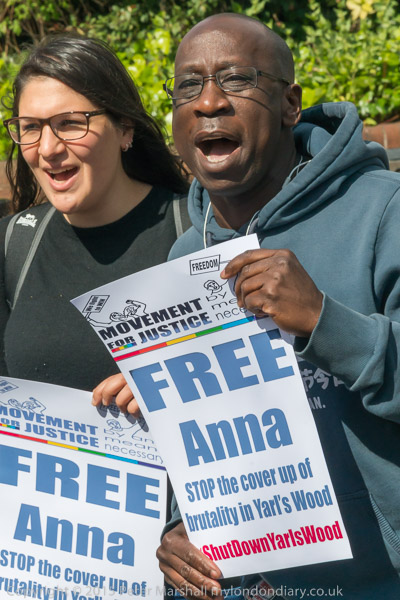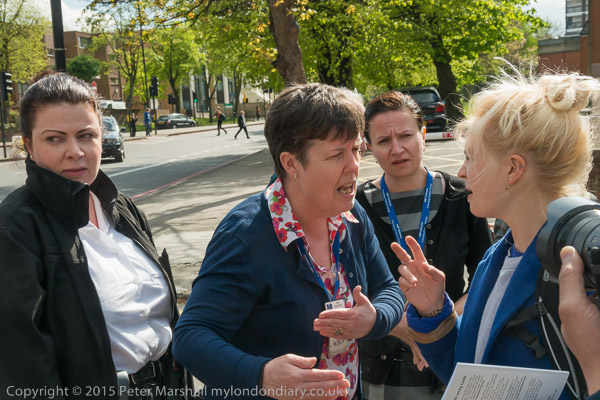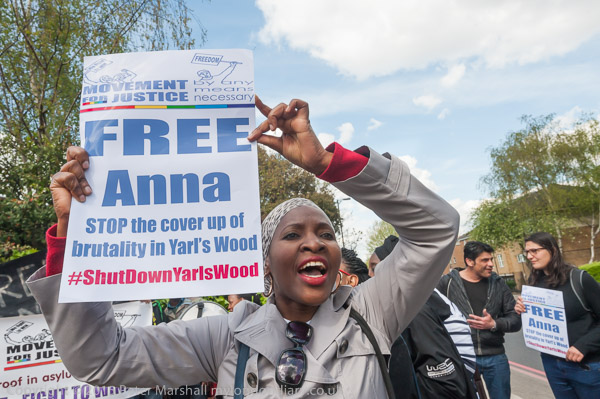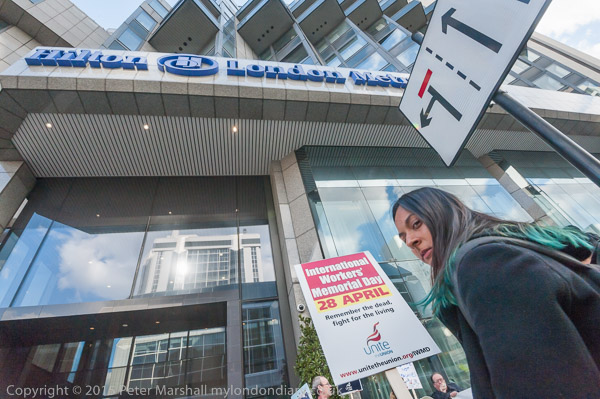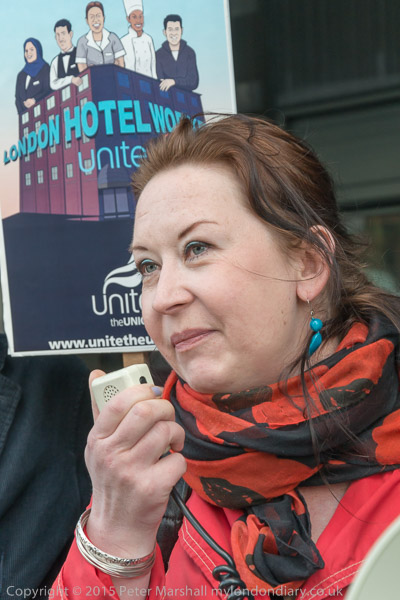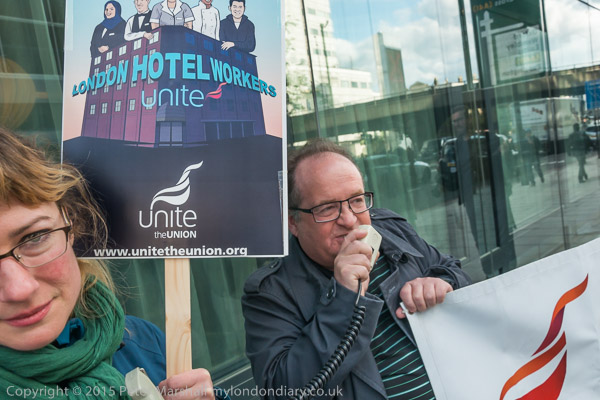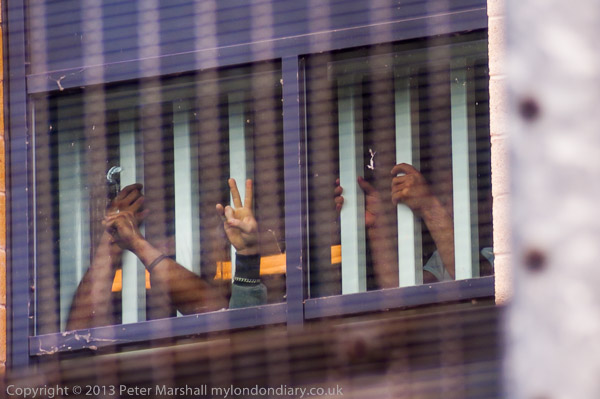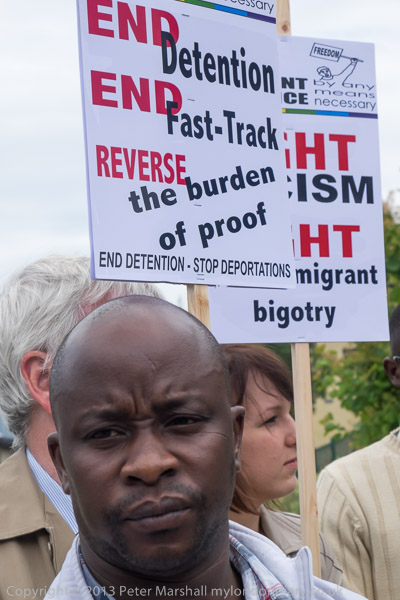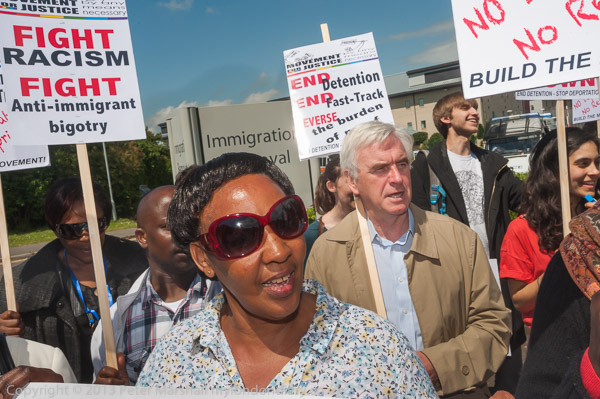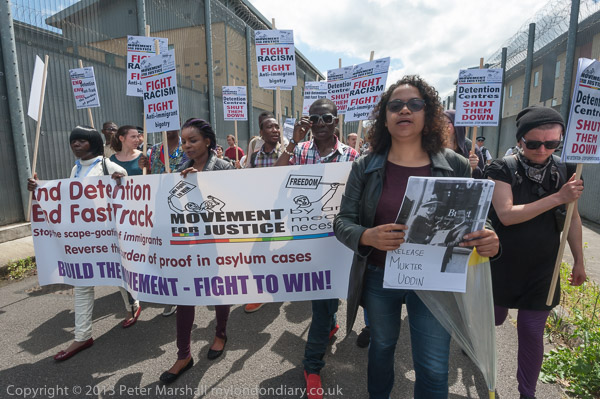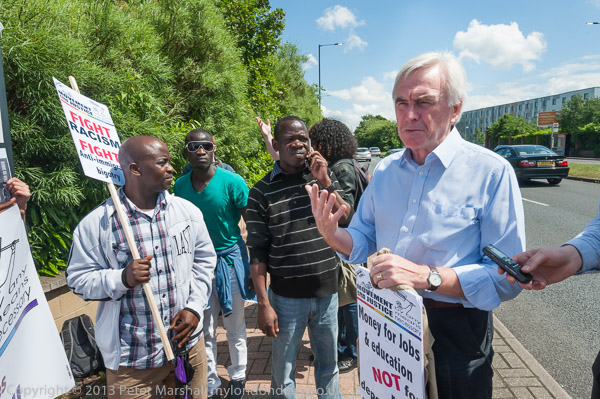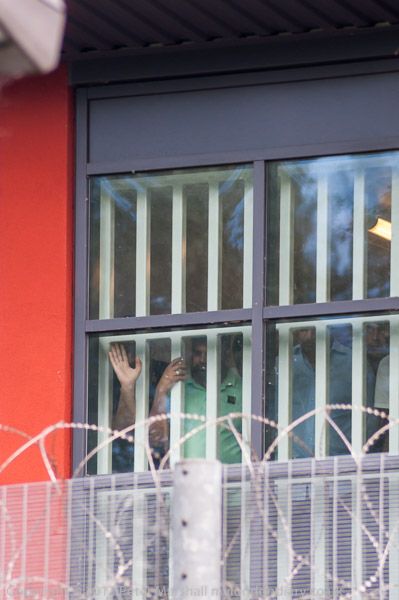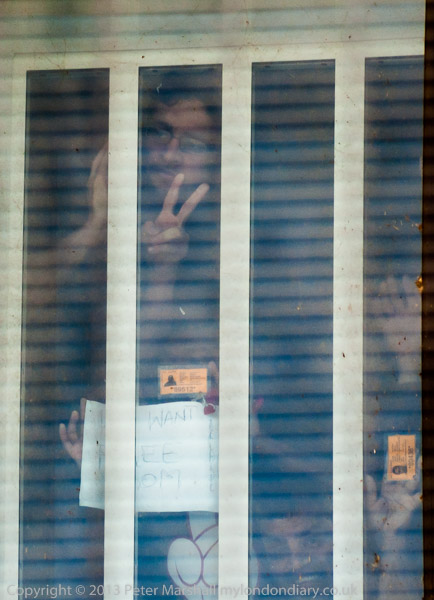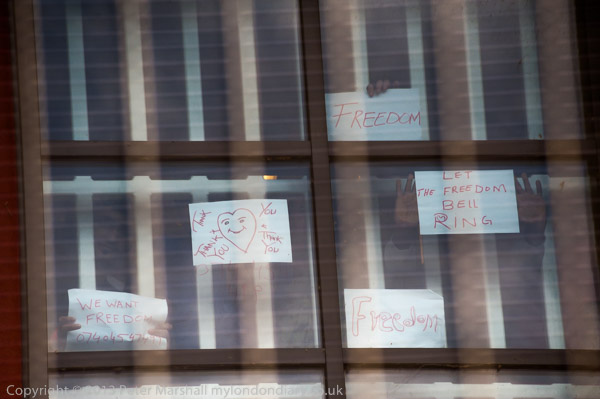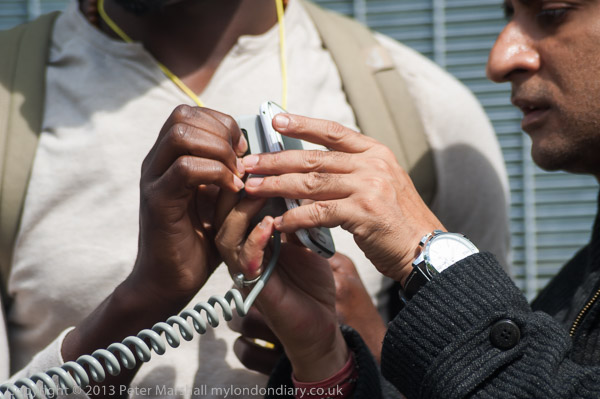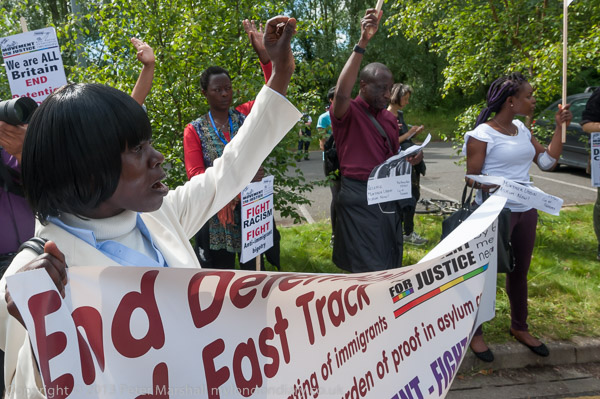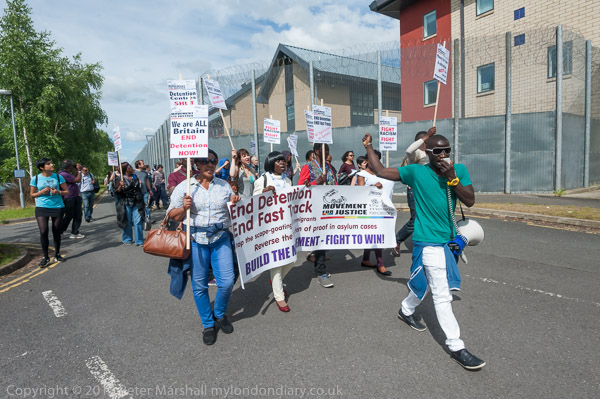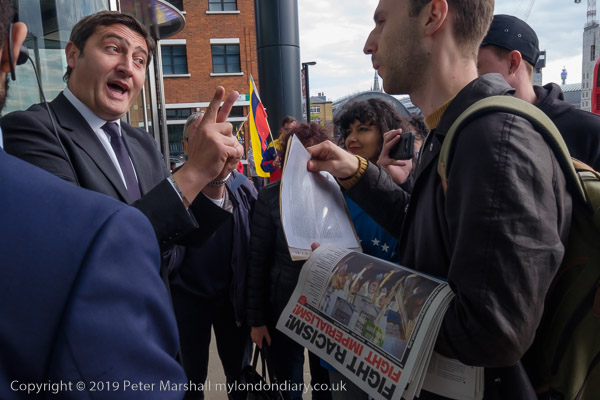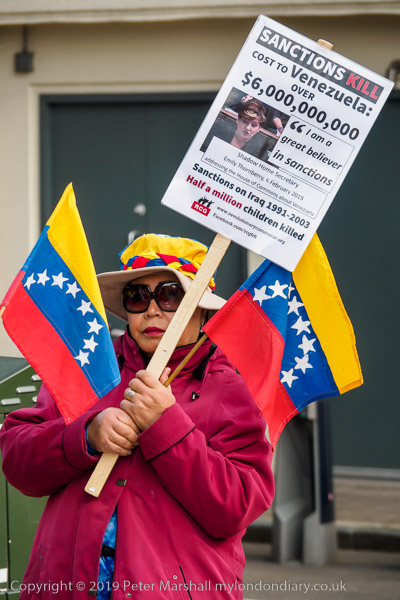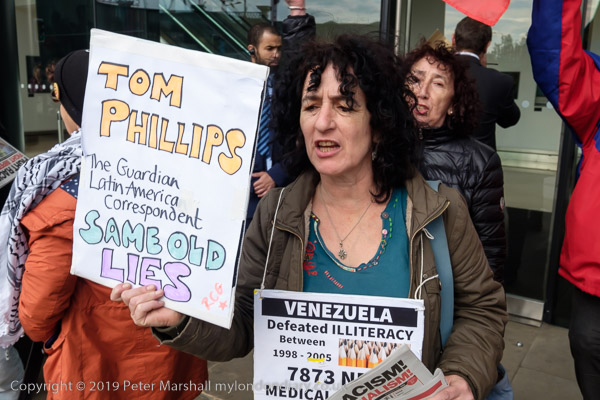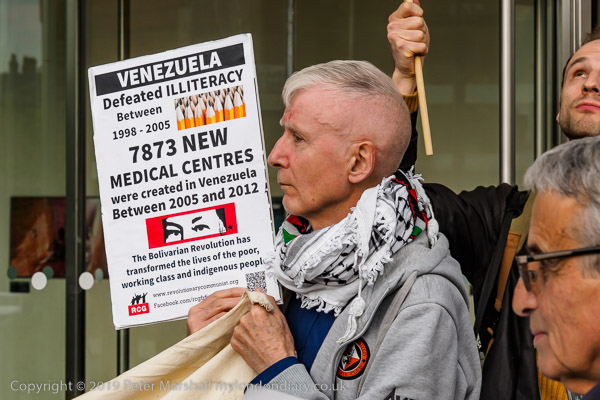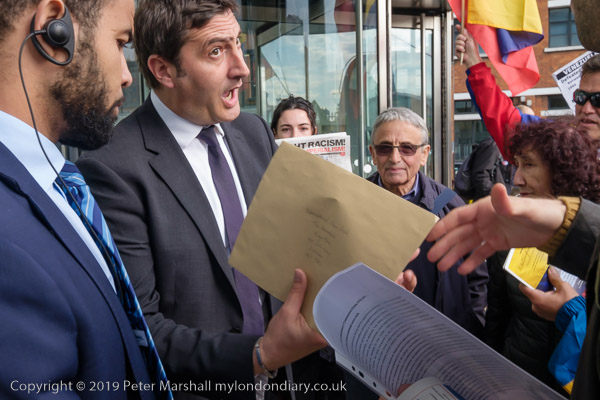Cat Meat, Teen Votes, Venezuela, Newham Nag & Monsanto: My day on Saturday 20th May included a very wide range of protests, beginning in Trafalgar Square with protests calling for an end to the killing of dogs and cats for their fur and meat as well as a protest demanding for votes in all UK elections at 16.
From there I went to a protest outside the offices of The Guardian newspaper against their biased reporting on political events in Venezuela – opposed by a handful of Venezuelans who called President Maduro a murderer.
Housing campaigners Focus E15 were outside Stratford Station handing out copies of ‘The Newham Nag’, based on Newham Council’s information sheet but condemning the council for their financial mismanagement and failure to address housing problems in the borough.
Finally at the US Embassy in Grosvenor Square March Against Monsanto were holding a rally, part of an international grassroots movement and protest supported by Bee Against Monsanto.
More details of all these and more pictures on My London Diary at the links to them below.
End dog and cat meat trade – Trafalgar Square
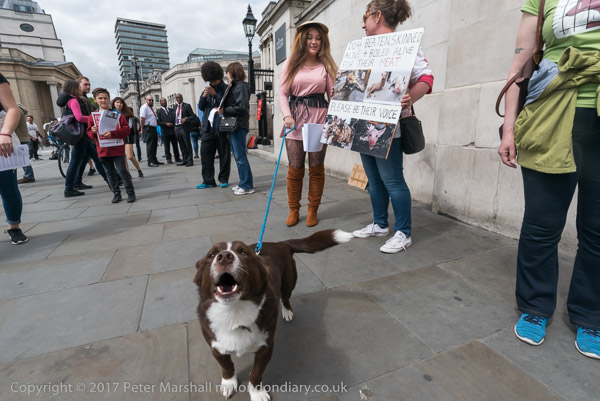
Apparently it was ‘Fight Dog Meat Kindness and Compassion Day‘ and there were protests across the world calling for laws to protect animals, especially dogs and cats, who are cruelly killed for their fur and to be eaten.

More pictures End dog and cat meat trade.
Teen Voice says votes at 16 – Trafalgar Square
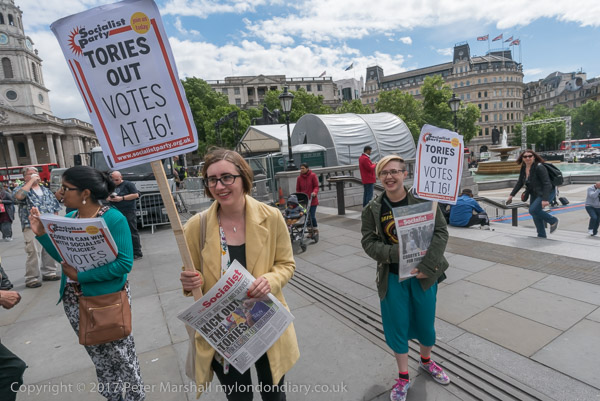
Teen Voice, who last year protested over 16-18 year olds having no say in the Brexit vote, came to Trafalgar Square to call for votes in all UK elections at 16. Had young people been given a vote we would almost certainly have voted to remain in Europe.

They say it is unfair that while they can work, pay taxes and even join the armed forces they have no say in votes which effect their future to an arguably greater extent than anyone who is allowed to vote in elections at the moment.
There were a few short speeches before I had to leave but the group were still waiting for other teenagers to join them. Probably holding a protest early on a Saturday morning was not the best idea.
More at Teen Voice says votes at 16.
End Media Lies Against Venezuela – The Guardian
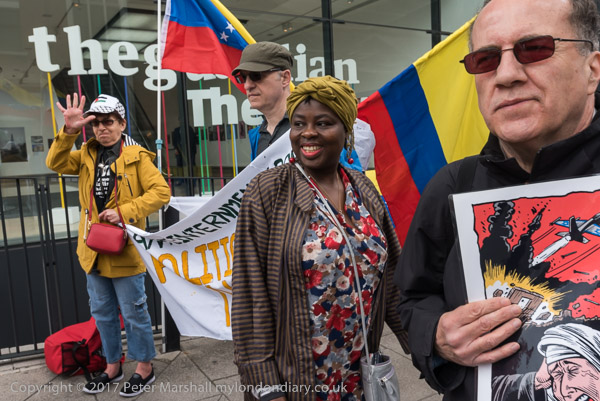
People protested outside The Guardian in London calling for an end to the lies and censorship of the UK press about the events in Venezuela.

They say that the current unrest is a right-wing coup attempt to overthrow President Maduro and the working class Bolivarian revolution, backed by the US, which the privately-owned Venezuelan press misrepresents as ‘pro-democracy’ protests and fails to report their attacks on hospitals, schools and socialist cities which have led to many deaths.
More on My London Diary at End media lies against Venezuela
Focus E15 launch The Newham Nag – Stratford Station

Housing campaigners Focus E15 launched their latest handout, ‘The Newham Nag’, based on Newham Council’s information sheet, handing it out outside Newham Station.
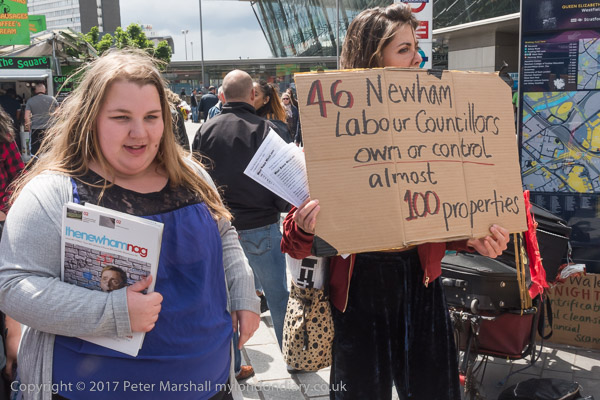

Police came and harassed them and Newham Council staff handed out a fixed penalty notice of £100 for alleged obstruction of the highway in the very wide public pedestrian open space in front of the station.

Newham’s use of risky and expensive long-term loans had resulted in 80% of the income from Newham’s council taxpayers going directly to the banks as interest payments. And one in 27 Newham residents are homeless – the largest proportion in any local authority in England. They say the council led by Mayor Robin Wales has failed in its duty to provide housing for residents.
More at Focus E15 launch The Newham Nag,
March Against Monsanto – US Embassy, Grosvenor Square
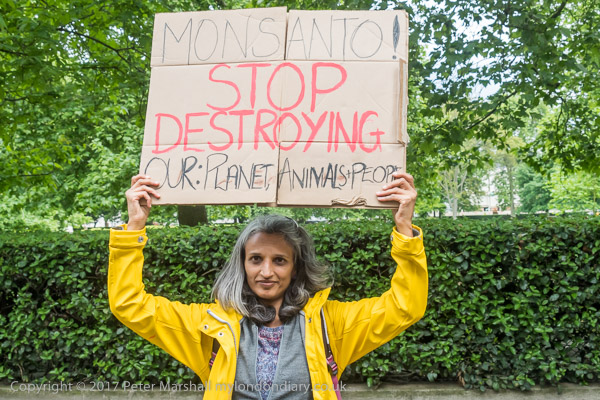
he March Against Monsanto protest outside the US Embassy was a part of the international grassroots movement and protest supported by Bee Against Monsanto.

Speakers addressed various issues around the use of genetically modified organisms (GMOs), Roundup, a glyphosphate herbicide, dangerous bee-killing neonicotinoid pesticides, and the need for improved protection victims of multinational corporations.

Campiagner Linda Kaucher speaks about the danger of trade deals such as TTIP which override national laws which protect our health and safety and endanger the integrity of our food supplies.

Flickr – Facebook – My London Diary – Hull Photos – Lea Valley – Paris
London’s Industrial Heritage – London Photos
All photographs on this page are copyright © Peter Marshall.
Contact me to buy prints or licence to reproduce.
